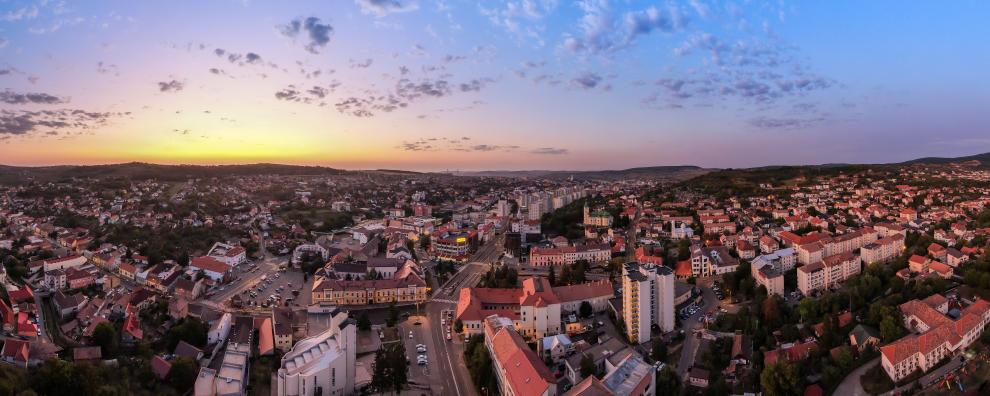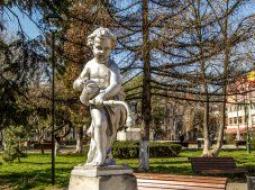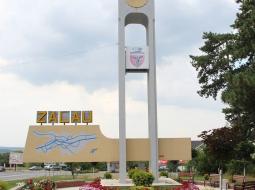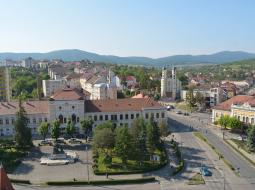Thessaloniki gets ready for its metro launch in November
The underground rapid transit lines have been under construction for almost two decades due to various project delays
 TheMayor.EU logo
TheMayor.EU logo 
Archaeological evidence attests to the existence of human settlements on the territory of Zalău municipality for around 6500 years, dating from the Neolithic period. The presence of settlers on these lands is certified by various objects discovered at the archaeological sites (coins, axes, ceramics, etc.).
After the conquest of Dacia by Trajan (year 106), the northern border of the Roman Empire passed through the Meseş Mountains. To the north of this stretched the territories of the free Dacians, and in the area to the south-east were the Roman border fortifications, towers, walls, ditches and defensive walls. On the territory of Zalău municipality traces of some Roman wooden castles were discovered, but the jewel of this defensive system is the Roman Castrul from Porolissum (on the present territory of the villages Moigrad and Jac, 12 km away from Zalău).
It can be said that Zalău exists as a settlement around 900, but the first written record about it is found in "Gesta Hungarorum", also called “Chronicle of Anonymus” - notary of King Bela IV of Hungary, published around 1210.
On 1 August 1473 Matei Corvin, king of Hungary and Bohemia, declared Zalăul for the first time a market town, "Oppidum Zilah", a privilege that removed the city from the domination of the county, granting it the right of free trade and eonomic independence.
At the end of the 16th century, the town belonged to Transylvania and had an autonomous administrative leadership, consisting of 33 elected senators, one of whom was the mayor.
Following the victory of 3 August 1601, from Guruslau, of Mihai Viteazul, the spiritual patron of the town, Zalău has enjoyed its own administrative, legislative, fiscal and military rules, as well as a real autonomy freedom to the citizens.
During the sixteenth and seventeenth centuries, a series of Calvinist colleges were established in Transylvania, the first one founded in 1646 - the current National College Silvania.
Zalău has always been the capital of the county, and in 1968 became the residence of Sălaj county. Because of that, after almost 10 years, in 1979 it received the status of municipality. Today, Zalăul is an important industrial center of Sălaj, a modern city with its own life.
Located in the northwest of Romania, at the crossroads between the Eastern Carpathians and the Apuseni Mountains, Sălaj County is known from ancient times as the Silvanian Country, the Forest Country. Its neighbours to the north are the counties of Satu-Mare and Maramureș, to the west and southwest is Bihor county, and to the south-east Cluj county.
The city of Zalău has a population of almost 60,000 inhabitants, occupies a total area of 90.09 km2, part of which comprises the city of Zalău and the village belonging to Stîna. Zalău is located in the center of the county on the valley of the same name and is the administrative residence of Sălaj. Located on the axis Cluj - Satu-Mare - Petea Vama, DN 1F - E 81, it is connected to a road network with access to western Europe.
Part of the administrative territory of Zalău Municipality is occupied by the Meseș Mountains, which essentially contributes to the quality of the environment.
Zalău Municipality has been an important economic center in this part of the country since ancient times. The industrialization process started at the beginning of the 20th century.
After 1918, there was an upward economic trend. During the Socialist period a wide range of industrial branches were developed and are maintained until today, such as: metallurgical and machine building industry, wood processing industry, processing industry, rubber, food, textile, etc. After the Second World War, nationalization led to the abolition of private property, the city of Zalău being subjected to a forced industrialization process.
After 1989, in the economic landscape of the municipality of Zalău, a multitude of activities from the tertiary sector appeared, with private capital, which indicates a healthy economic evolution, based on supply and demand. The basic economic activity of Zalău Municipality is industrial, with a greater weight of the manufacturing industry: the metallurgical industry (TENARIS Silcotub SA); rubber processing (Michelin România SA); woodworking; manufacture of machinery, machinery and equipment; manufacture of glass fibers; manufacture of clothing; manufacture of metal products; electrical works; recovery of recyclable materials; construction works.

Made after 1854, the Tountain is one of the most important landmarks of the whole generation of Zălăuani.
Over the years, the Fountain with angels has undergone changes in its appearance and location. In the past, the fountain had the same round shape, except that its existence was reduced to the pool guarded by 4 angels. The angels were located on the outside, because the water could only be poured from the sprinklers they held in their hands. At the base of the stands, on which the angels are positioned, even in the area under the sprinklers, there was a small basin that took the water and directed it to the large basin collector.

Residence of Sălaj county, Zalău offers to the tourists who stop to visit it a rich history and an impressive heritage. In the municipality there are tourist attractions that are visited by tourists every year. Among the most famous are Transylvania building, Zalău City Hall and the Fountain with Angels.

It was built in the second half of the 19th century and is an example of an eclectic construction. The most important element is the former ballroom and theater on the B floor, decorated with an impressive mural painting in a secession style of about 300 square meters.
The Transylvania building is part of the Iuliu Maniu Square complex and forms together with the buildings of the City Hall, the National College of Silvania, the County Department of Culture, the Wesselenyi Statuary Group, the Fountain with the Amorasi, an expressive and specific personalized ensemble for a Transylvanian city.
Address: Zalău, Piaţa Iuliu Maniu №3, judeţul Sălaj